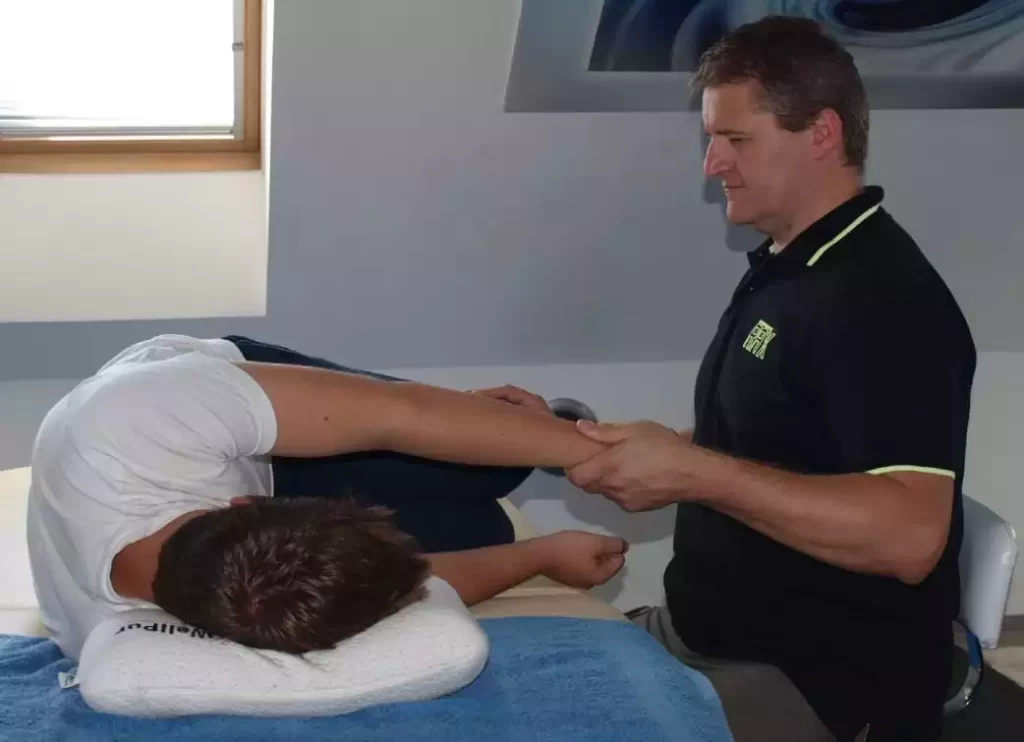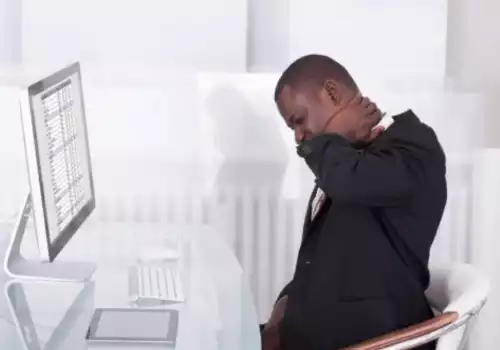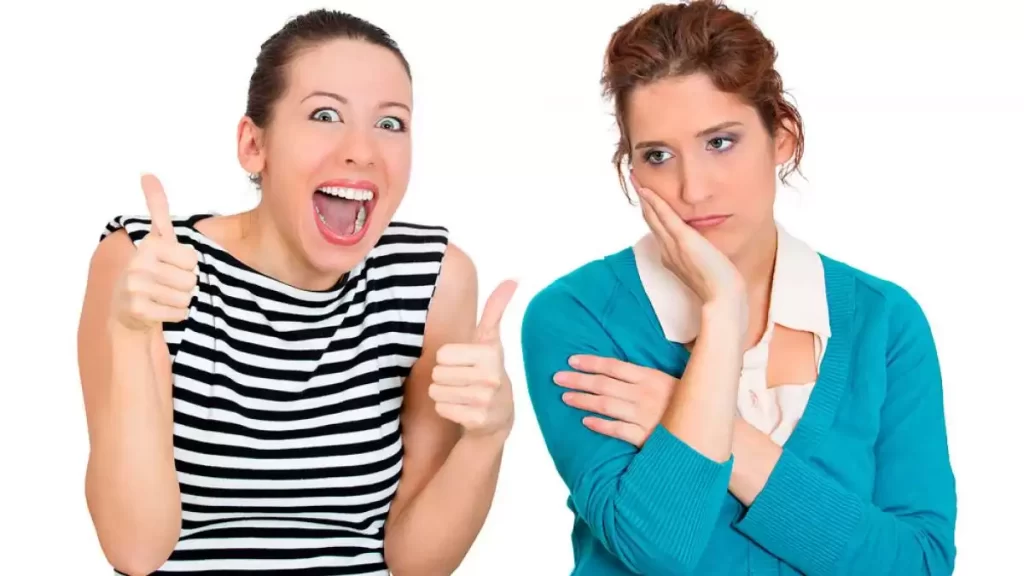A foot and a hip always function cooperatively
Why? Because the knee joint (connects the two parts of the knee) can move only in the direction backwards and forward and cannot bend in any other angle. If we move our foot to the left or the right, the knee doesn’t move, and it is locked; the hip must move. Hence, if we would like to move and turn our foot easily, we need to be able to move and rotate our hip without restrictions. The hip is connected to the body with muscles of the torso and the spine. The spine is composed of 24 vertebrae, and they all move. The more we feel, control and are aware of the trunk and the spine movement, the more correctly, efficiently and freely we move our hips, knees and feet. And vice versa: the joints in our legs are inflexible and stiff when we have reduced flexibility in the torso, when we don’t have a pleasant sensation of the back and when we are tense. Consequently, our legs don’t move as freely as they could; they are less efficient and less suitable for everyday work and tasks.
So why do our legs, and especially our feet, cause so much pain as we age? It is because we are becoming stiffer with age, more rigid in the back, the torso, the neck and as a result also in our hips, and this rigidity is forcing us to use our legs and feet inefficiently. Instead of responding softly and smoothly to the floor, we fight it. Namely, we don’t have enough flexibility and agility in our feet, which harms our bones and joints, and all this is continuously overstraining the muscles that become painful and fatigued.
How to change the functioning of your feet and legs
Cortisol injections will not help us either as long as we are abusing our feet due to rigidity and immobility of the hips. Pulling and tugging our legs won’t relieve our muscles in the long run either. We must voluntarily try to make our movement soft and smooth again, flexible in the hips and the torso.
Če moramo nenadoma odskočiti pred avtomobilom, pomaga, če smo gibki, saj trd hrbet enostavno ne omogoča hitre reakcije,
zato tudi noge in stopala ne morejo zadovoljivo slediti.
Even though it sounds impossible, we can relearn or regain the necessary flexibility regardless of age. The AEQ method® reveals how to feel your body and your movement again, how to be more aware of them, and how to transform the rigid motions into soft and smooth movements.
Sports injury treatments
I come across many cyclists and other athletes at my work, and they all lament the pain in knees, hips and feet. Their usual solution to the problem is an adjustment of the seat on a bicycle, purchase of different pedals, seat or shoes. However, the scenario is always the same: pain returns, or even worsens, after a few months of relief, improvement. It’s a simple reason for that. Namely, they haven’t been addressing the right cause for their problems.
Cyclists and runners who learn to feel their bodies and to control their movements through learning the AEQ method® mention fast and lasting elimination of their problems and pain in all areas of their lives, at sports, work and in private life, during sleep too. Their physical fitness and capabilities (strength, endurance, reaction time, reliability), the joy of life and sports are increasing with the improvement of their physical and mental state.
EXPERIENCING THE AEQ METHOD®
I still remember calling Aleš and describing my problems with knee pain while cycling. And he listened carefully. He asked calmly about my shoulders and possible past injuries and surgeries, he didn’t mention the knee, and he reassured me that I would be fine. My smile went from ear to ear, and I felt right away that we would be working on a cause, and we wouldn’t just be “patching up” the symptoms.
When I think of it, the first time I felt the pain while cycling was in my student days 15 years ago while I was cycling in Ljubljana; the pain was in my left groin. A few years after that, the pain reappeared and even spread to the lower back, left hip and knee and to the opposite (right) foot. But the pain wasn’t present just when I was cycling; it also appeared when I was running, walking uphill, during my work, when I was getting in and out of my car seat, basically at my daily activities and not just at sports.
As always, I thought the solution was to strengthen the weak muscles, even though I regularly practiced sports. I kept adding new exercises, attending physiotherapeutic treatments, doing massages with different props and stretching till exhaustion.
I kept searching for something that would help me as I was displeased with the results, and I was feeling restless until I have finally “met” the AEQ method®.
The key was to relax certain body parts and to become aware of them, or become aware of the movement of these parts during the clinical somatic exercises, and also to recognize the red light reflex. I was absorbing Aleš’ words, everything seemed natural to me, so down to earth, logical, simple, I was surrendering more and more to the clinical somatics philosophy with each therapy until I have finally internalized it. I’m doing the AEQ exercises® daily from 10 to 30 minutes (all other methods and props have become redundant), but I’ve also started transferring certain principles of the AEQ method® in my everyday life. I make a sort of brief mental inspection of my body during certain activities (cycling, climbing, playing with children on the floor) to determine which part of my body is not relaxed, where is the obstacle, how do I breathe etc., I mend that and continue successfully.
Benjamin Trontelj, dipl.del.ter. (Occupational therapist)
My season in 2015 started with proper training and progress for the wintertime. Unfortunately, that came to a halt with unexpected knee pain at the end of February. I stopped the practice as it happened right before the first race in Cyprus, but a break alone was not enough. I visited several doctors upon my return to Slovenia; however, their diagnoses differed from one another. I was disciplined and strictly followed doctors’ instructions and went to therapies. My recovery was minimal and slow. Aleš Ernst looked me up on FB at that time and offered to help me.
The AEQ exercises® take about 15 to 20 minutes every day – after the training and in the evening before I go to sleep. I’m less tired after my training, and I also feel my body is more relaxed. However, I got injured again that season (2015) – I fell at the national championship and fractured my rib. Exercises of the AEQ method® helped me overcome that injury as well.
Mr. Aleš Ernst, I thank you for helping me save my unfortunate season as I got the bronze medal at the European Championship. I’m also aware of the reserves I have when it comes to taking care of my body, and I’m hoping to use these reserves with the help of the AEQ method® in the Olympic season 2016!
BLAŽA KLEMENČIČ – gorska kolesarka






